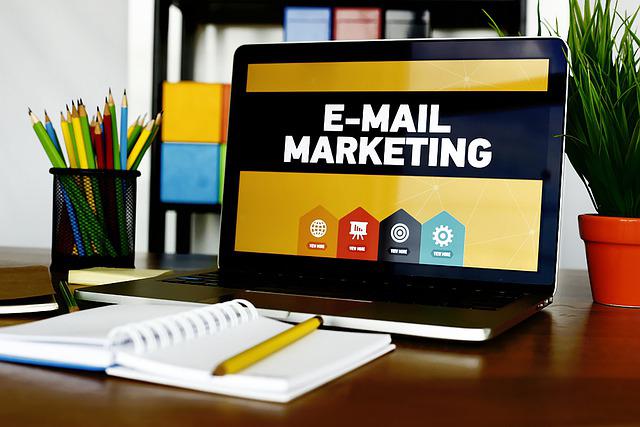How To Get Started With Email Marketing & Make Money
Are you aware that there are three times as many email accounts as Facebook and Twitter accounts combined? Or that email has a 6 times higher click-through rate than Twitter does? Email marketing is an investment. According to research, email marketing brings a return of between $38 and $44 (ROI) for every $1 spent, making it deserving of a spot in every marketer’s toolkit.
Yes, there are more modern ways to interact with your audience and customers, such as live chat and social media. The number of global e-mail users reached four billion in 2020 and is expected to rise to 4.6 billion by 2025. Therefore, with over 4.6 billion users, email is the undisputed marketing king.
Email is among the oldest and most traditional methods of digital communication, but it’s also one of the best digital marketing strategies available.
Social networking, SEO, and affiliate marketing are still beaten out by email marketing as the most successful marketing channel.
Why? Why is this decades-old technique still one of the most successful marketing tactics in light of all the buzz around new strategies?
What is Email Marketing?
Email marketing is a digital marketing technique for interacting with customers via emails.
That is, sending emails to leads to nurture them and turn them into clients. With the use of segmenting, tagging, funnels, automated mailings, as well as other email marketing techniques, you may build a level of familiarity and trust with your subscribers.
Even though the emails typically have a business purpose, they can also serve to inform and educate the receiver on relevant subjects.
Email marketing can be defined as the practice of leveraging email as a sales channel.
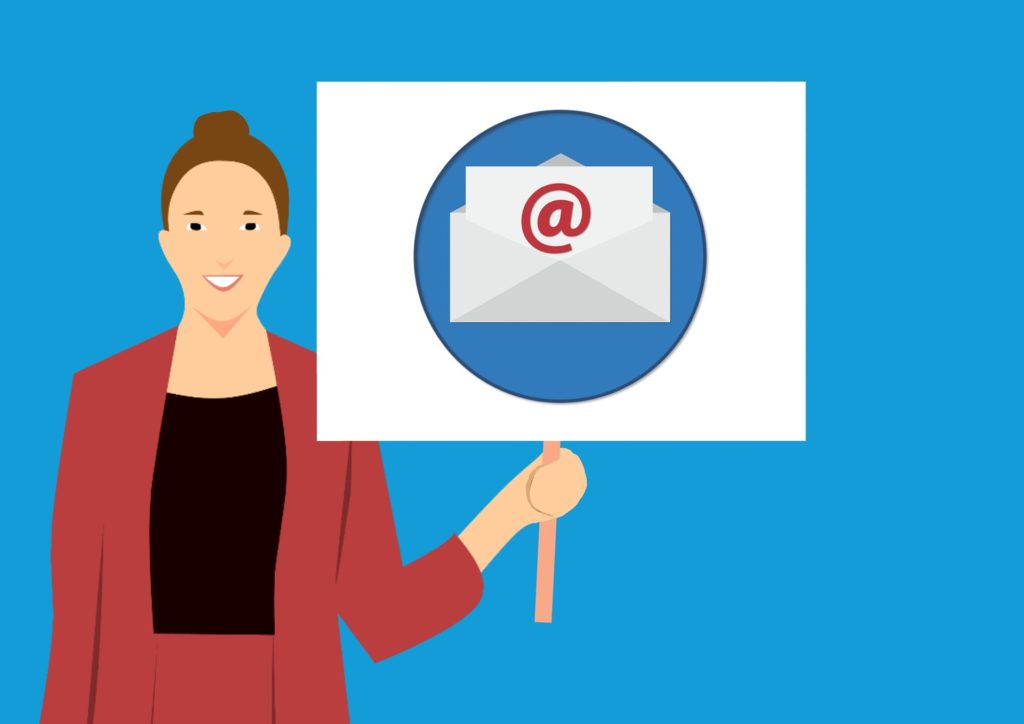
You need a sizable email list of people who freely signed up to receive your communications to do this.
This instantly disqualifies the purchase of email lists, even if those lists contain the emails of persons who are anyway associated with your niche.
The Benefits of Email Marketing
The following are some benefits of email marketing:
- It’s a fantastic approach to creating a community around your brand.
- You can increase your leads and sales with its assistance.
- It’s one of the best methods for increasing repeat traffic.
- It’s a strategy to reduce some of the dangers brought on by SEO algorithmic updates. This is crucial because once you have a sizable list of engaged email subscribers, you won’t need to worry as much about SEO adjustments that can hurt your traffic.
- There’s virtually no contest between an email campaign and social media:
- 59% of people use a mobile device to check their emails the majority of the time;
- Up to 77% of us prefer marketing emails to scrolling through social media;
- An efficient email marketing strategy can increase customer acquisition efficiency by up to 40 times.
- Additionally, unlike your followers on social media, you own your mailing list. Your social media following would leave too if Facebook or Pinterest were to permanently close their doors.
- Finally, email marketing is a successful tactic for attracting customers. Compared to sending your list a generic email newsletter, it converts 208% better.
- The segmentation, funnels, or onboarding series used in your marketing automation plan help nurture subscribers and ultimately convert them to your offerings.
- Other marketing channels do not permit you to do this.
Also Read:
How to Get Started with Email Marketing
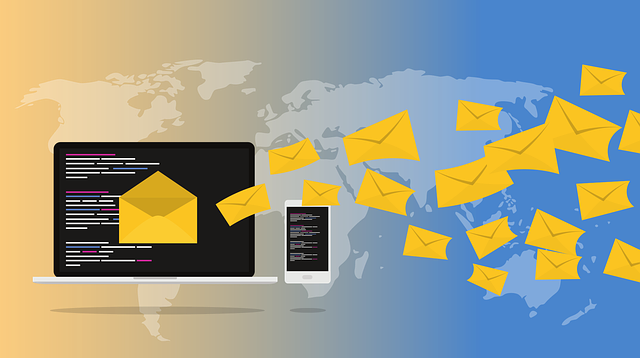
Sending promotional emails to a big number of people is one of the ways that businesses employ email marketing as a marketing strategy. It is frequently used to promote the efficiency of content marketing campaigns by dispersing promotional offers, cultivating leads, or raising sales.
There’s a strong possibility that at least half of your messages are email marketing if you check your inbox right now.
You must create a subscriber list before you can start email marketing. While some businesses buy lists, it is never advised because these people haven’t specifically requested to hear from you and are likely to classify your messages as spam, harm your sender reputation, and negatively affect delivery. You must make sure that everyone you email is eager to hear from your business to grow a highly engaged audience.
Instead, create a compelling offer and give a straightforward sign-up form to get visitors to subscribe to your email list. This offer might be anything from a special promotional coupon to a free ebook. It’s crucial to make sure you are GDPR compliant if your email list contains subscribers from the European Union.
How do you get your intended audience to your landing page for email sign-up?
Think about a variety of tactics: you could create an SEO-optimized content marketing campaign that draws visitors with pertinent educational content, or you could just concentrate on focusing on a specific audience through social media or PPC ads and offering a promotional offer as an incentive for signing up.
How Does Email Marketing Work?
One of the best-performing marketing techniques is email marketing, largely because to its
fairly automatic, and intuitive.
It can also assist with a variety of other marketing programs, such as lead generation, sales, and content marketing.
Three crucial components are necessary for an efficient email marketing campaign:
1. An Email List
An email list is a collection of subscribers who have opted to receive emails from you.
An active, engaged email list is required to build successful email marketing.
There are numerous approaches to building an email list. One of the simplest is to develop a lead magnet (also known as an offer) that your target audience is interested in, such as a coupon, in exchange for their email addresses.
How to Build And Grow An Email List From Scratch
Building an impressive email list can seem like an impossibility if you’re just getting started. Here are some excellent options for creating an email list from scratch. The best part is that these strategies aim to build a strong email subscriber list so you can use your emails to acquire loyal, long-term clients.
- Create a personalized CTA (call-to-action) for each blog or landing page.
- Create a pop-up or slide-in for each page of your site.
- Create a timed pop-up survey.
- Use humor or sarcasm in your CTA’s “no, thanks” copy.
- Describe value in your CTA.
- Pitch your email newsletter on your social media accounts and email signature.
- Create more landing pages.
- Encourage everyone to sign up immediately.
- Include a CTA on your About Us page.
- Try a scroll box.
2. An Email Service Provider
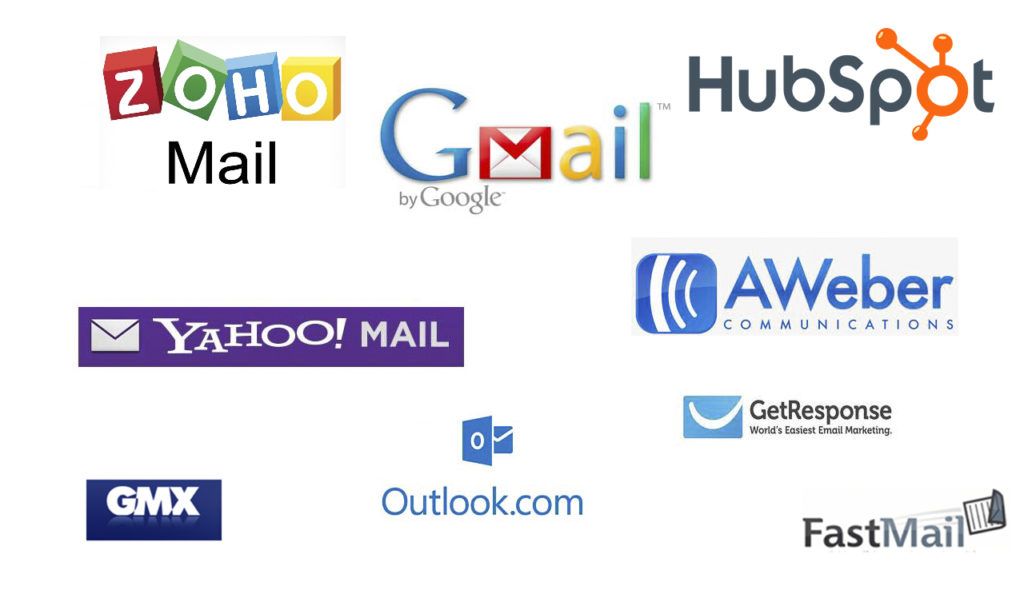
Software that assists in managing your email list is referred to as an email service provider (ESP), sometimes known as an email marketing platform. It also aids in creating and carrying out automated email campaigns.
If a user adds an item to their cart but doesn’t check out, you may send them a cart reminder by using an ESP to set automatic triggers when they complete those activities. You may customize interactions using these triggers, which boosts open and engagement rates.
3. Clearly Stated Objectives
You can use email to accomplish several business objectives, such as:
- Promote sales
- Increase brand recognition
- Creating and nurturing leads
- Keep clients engaged
- Boost lifetime value and client loyalty
Your email list, ESP, and objectives must all be in line for your email marketing campaign to be successful. Then, you can start working.
Segmenting your email list based on subscriber characteristics or behaviors is the first step.
Next, draft an email or a series of emails aimed at making recipients take action (your goal).
Finally, automate email sending and campaign monitoring using your ESP.
How to Choose Your Email Marketing Tools
Email marketing, as we all know, isn’t just about sending people random promotional emails and hoping they’ll convert into customers overnight. It’s about employing tailored content to deliver your message while interacting with individuals in a humanized way.
Having said that, managing your lists and sending emails with an Excel spreadsheet and Outlook is no longer sufficient. You need something that is far more effective in the present era.
A recent survey found that 60% of marketers believe email marketing is generating a substantial ROI and that 32% believe it will eventually. Therefore, it is essential that you select the appropriate email marketing software for the task.
These three factors should be taken into account while picking your platform.
Integration
Your CRM (Customer Relationship Management Software) is your best friend when you operate in digital marketing. Selecting an email marketing platform that integrates seamlessly with your CRM will give you a hassle-free solution for managing valuable content and customer data as well as give you an overview of key metrics (open rates, click-through rates), allowing you to see which campaigns are performing the best. Updating lists and sending emails manually takes time, so choosing an email marketing platform that integrates seamlessly with your CRM will save you time.
Reading and Viewing options
43% of people now check their emails daily on their smartphones
Today, fewer and fewer people check their emails from a typical desktop environment, therefore it’s crucial to pick an email marketing software with functionality and mobile-friendly layouts. Your efforts will be ineffective if someone opens an email on a mobile device and it cannot display properly.
Response handling
Regardless of how big or small your company is, addressing email responses is crucial. Smaller businesses that send out newsletters or email series to 1,500 or fewer recipients each month will have less sophisticated automation and response-handling needs, and they will be able to complete some of the jobs manually. However, if you’re dealing with a large volume of emails, it will be helpful to use an email marketing software that enables you to send automatic responses or compile customer feedback into tickets.
Top Email Marketing Tools Every Marketer Should Know
Email marketing tools are necessary to streamline your procedures and execute a successful email campaign. The top email tools you must are listed below:
Email Service Providers (ESP)
A good email service provider (ESP) is one of your most important tools. The best ESPs are:
Constant Contact
This is ideal for e-commerce email marketing campaigns due to features such as automated product recommendations and shoppable newsletters. Plans begin at $36 per month.
Sendinblue
The greatest email marketing platform for small businesses is Sendinblue. A CRM, live chat, and SMS are just a few of the many features it offers. Although they do have a free version, paid subscriptions begin at $25 per month.
MailerLite
MailerLite stands out from other free email solutions available on the market because of its sophisticated features like the pop-up customizer and landing page builder. The tool has a powerful text editor and an integrated photo editor in addition to the essentials like the drag-and-drop email builder, allowing users to produce eye-catching emails. Free versions are available, but paid subscriptions start at $9 per month.
AWeber
AWeber offers the ability to swiftly design responsive landing sites, load and manage contacts, send great emails, send immediate push notifications, and analyze results without the need for a tech genius. AWeber collaborates with over 1,000 software partners, allowing clients to effortlessly integrate with the tools and services they rely on to run and develop their businesses.
Paid subscriptions start at $19.99 a month, however, you can also have a free account.
Read More: The top 7 Email Marketing tools to make you money in 2022
Email Deliverability Tools
The term “email deliverability” describes an ESP’s capacity to successfully deliver emails to recipients’ inboxes. An email deliverability tester is a useful tool for email marketers. Some of the bests are listed below:
MailGenius: This program scans your emails for potential spam indicators. To make sure your emails get into the inboxes of their intended recipients, you can utilize MailGenius to conduct deliverability checks. This tool is free.
GlockApps: Whether your email ended up in the Inbox, Spam bin, Gmail’s Promotional or Social tabs, or whether it was never delivered at all, GlockApps displays your delivery results in real-time. Personal accounts are free, after which charges increase.
Email Testing and Tracking Tools
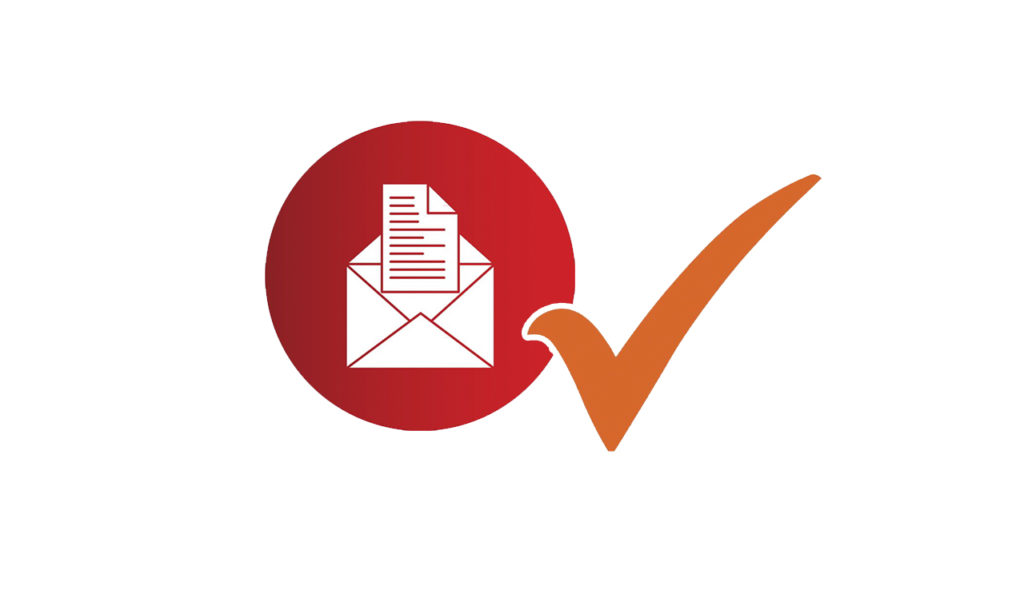
You can improve your marketing iterations by testing and monitoring their performance. What are the finest email marketing tools for testing and tracking?
Litmus: Your emails can be tested and monitored using Litmus in both traditional web browsers and popular mobile devices.
This feature might also be available through the ESP you use.
Email Personalization Tools
Utilizing an email personalization tool will let you personalize your emails beyond simply adding the names of your recipients.
Hyperise: No other tool does email marketing campaign personalization better than Hyperise. It enables you to include dynamic, customized images—including profile pictures from social media platforms—into each of your emails.
This feature might also be provided by other tools, such as your ESP or customer engagement platform.
The 4 Types of Emails to Send to Your Email List
With a subscriber list now, what kinds of emails do you send?
Your created email campaigns will function as part of an email nurturing sequence that will aid in establishing a relationship with your subscribers and encouraging participation.
Let’s take a look at four email kinds you may send to your email list to increase conversions and establish trust.
Welcome Email
A welcome email is among the best email campaigns for onboarding that you can use.
The first interaction your members will have with you will be through welcome emails, which often have the greatest open rates (up to 84%).
You had better make it matter!
A welcome email should be straightforward, introducing your company, explaining why you’re the finest in your field, and outlining how you can assist your subscribers.
Imagine that reading your welcome email is like meeting someone for the first time. What information do you want people to know about you and your work?
A curiosity loop to encourage your new subscribers to read your next email should also be included in your welcome email, along with links to any items you may have and any social media accounts you wish to advertise.
Giveaways
Giveaways and competitions can quickly grow your brand’s recognition and attract a whole new audience.
Sam of Money Nest’s email list increased in seven days as a result of employing giveaways, according to experienced bloggers. However, you can also inform your subscribers about your giveaway.
Newsletters
Newsletters perform well if you provide your readers with exclusive email content that you do not post anyplace else.
Using a call to action, you may optimize each newsletter for your items (CTA). At the top of his email, Paul Jarvis informs his followers about his new podcast season.
Curated Emails
It’s lovely when someone personally chooses a book or movie for you, isn’t it? For the members of your email list, curated material can accomplish the following.
You can compile a type of playlist and share the intriguing information you’ve discovered.
Take a cue from Tailwind’s email and use content curation to share what you’re reading with your readers.
Best Email Marketing Strategies
You must plan smart campaigns if you want to succeed with email. Here are a few of the most effective tactics you can use.
Utilize the Proper Email List-Building Strategies
Having a high-quality email list is essential for the success of your email marketing campaigns. Utilizing list-building strategies created to draw in your target market is essential for building a list.
For instance, a case study advertised on LinkedIn may help a B2B business develop a list of engaged subscribers, but it would fail if it were used by a B2C brand.
Good list-building tactics include the following examples:
- offering a coupon
- creating a downloadable asset
- hosting a webinar
Maintaining a Clean Email List
Keeping your email list clean is a crucial component of any email marketing plan. Your sender reputation will be enhanced by eliminating inactive subscribers and inaccurate email addresses.
Sending an email to subscribers who haven’t opened it might be a good idea to check on their interest. Take them off your list if they are not.
Warm Up Your List
Send emails to your list regularly to maintain interest (warm). Sending emails sporadically could make subscribers forget who you are and lower conversion rates.
You can execute a re-engagement campaign using paid advertisements if some of your subscribers go cold
Focus on a single Goal
Create each campaign and email with a single goal in mind. With email marketing, attempting to accomplish two (or more) goals at once is futile. Your viewers will just get more confused, and your conversion rates will drop
Choose and monitor the appropriate KPIs
More than just sending them an email once every few weeks is necessary for success. You must monitor the results of your efforts to determine whether the strategies are efficient. That entails selecting and monitoring the proper key performance indicators (KPIs).
Depending on your goals, your KPIs might include:
- open rates
- click-through-rates
- sales
- blog traffic
- unsubscribe rate
Segmenting Your Email List
How Do You Segment Your Email Lists?
When you divide your email list into sub-lists based on standards you establish, this is known as email list segmentation.
When a subscriber clicks on a specific link in one of your emails, for instance, you can set up a condition that segments them into a new list of people who are interested in your eBook.
Why Would You Segment Your Email List?
Instead of sending the same emails to a list of subscribers that aren’t targeted, segmenting your email list enables you to deliver pertinent information to different subscriber groups.
Simple ways of Segmenting Your Email List

You can divide up your list in several effective ways. Location-based segments, for instance, are very popular.
If your business is event-driven, you may send a targeted email to your subscribers informing them about an upcoming event you are throwing in their city using the location of your subscriber.
You can also segment your email list based on your interests. Screw the 9 to 5’s Josh and Jill use a quiz as their lead magnet.
A person who takes the quiz will receive targeted emails depending on their quiz results.
You can create segments based on the behaviors of your subscribers if you have several opt-in offers.
You can set up a trigger link when you scrub your email list to ensure that only engaged subscribers remain on your list.
You can also segment your list by preference.
You can poll your subscribers to see if they want more, less, or new information.
Giving your subscribers the option of receiving notifications of new Facebook Lives, YouTube videos, or podcast episodes is a proven method to reduce unsubscribes and retain engaged members.
How to Automate Your Email Marketing

What Is Automated Email Marketing?
A sequence of emails sent automatically to prospects or consumers is known as automated email marketing. You can use an autoresponder to send emails based on your audience’s engagement with your company.
Despite the fact that each ESP has a different automation procedure, there are a few common phases you’ll follow.
Define Your Email Segments
List segmentation is the foundation of efficient campaigns. Group your subscribers using the information you have about them. You can design more individualized marketing as a result.
Depending on who you are writing for, this information could be:
- data about user behavior from your website.
- demographic information, including place, age, or gender.
- matters that are significant to them.
Create a Good Email Series
It’s time to create a series now that your email list has been segmented. This is a list of emails that achieve the campaign’s goal.
Choose the Correct Triggers
After creating your workflow, decide what steps will send the next email in the series. Customers opening your email, clicking on a link, or not opening it within a certain amount of time are a few examples of triggers.
Your email triggers could take the form of the following, depending on your objectives:
Subscriber signs up for your email list → Send a welcome email with a coupon and several popular items.
After one week → Send a second email promoting new arrivals.
Subscriber visits your women’s clothing section → Send an email promoting a new collection.
Although this example is for an online store, you can develop similar series for generating leads, advertising a course, or increasing blog traffic.
How to Craft Results-Driven Email Marketing Copy
Whatever your objective, email marketing copy is crucial to achieving it. That is why you must write yours well. Here’s how.
Know your Audience
Knowing your consumer is the first step in creating compelling email marketing copy. This will allow you to segment your list more effectively and develop more focused email copy.
Create an Attention-Grabbing Subject Line
The subject line is one of the most crucial aspects of email copy since it determines whether or not readers will open your email. Follow these guidelines to create an attention-grabbing subject line:
- use keywords
- make it benefit-driven
- use the active voice
- personalize as much as possible
Emojis may increase open rates in your email campaigns, depending on your audience. Avoid words like clearance, free, bargain, cash bonus, etc. that could cause spam filters to go off.
Make the preview text accurate
Email preview text is displayed right beneath or next to the subject line. It serves as an elevator pitch to persuade recipients to open your email and is limited to a maximum of 140 characters (depending on the email client).
Your subject line is expanded in an optimized preview text, which supports your value proposition. Make sure the email’s subject line is clear and provide readers with a good reason to open it.
Making it simple to read
People are busy, so they won’t spend much time understanding what you’re trying to say. Make sure your email copy is simple to read and understand. To do this,
- Use concise paragraphs and sentences
- Use bullet points
- Reduce jargon and complex sentences
- Your readers will probably interact with your emails more if they are simple to read.
Use storytelling as a tool
Stories are a wonderful tool for capturing interest and spreading your message. Because of this, you should use storytelling in your email copy.
To generate interest and entice consumers, think about utilizing the “Attention – Interest – Desire – Action” approach.
Utilize Psychology for Your Benefit
Humans are programmed to respond in particular ways. To guide your readers toward achieving your marketing goals, use psychological triggers. Such triggers include:
- social proof
- color psychology
- and fear of missing out (FOMO)
When properly utilized, these triggers can aid in the creation of compelling email copy.
How can your email marketing strategies be improved?
What can you do to create more interesting emails and increase your users’ open rates now that we’ve covered the fundamentals of email marketing and the various tools you can use to do it? Several things to think about are as follows
Concentrate on quality
Make sure your content and design are top-notch. Your emails should be a powerful reflection of your business and offer interesting material that will motivate your reader to take the desired action (clicking a link, making a purchase, etc. Visit the Really Good Emails sites for ideas on some of the top email marketing practices currently being used.
Personalizing images dynamically
You probably already use merge fields to add your user’s name to written material to make it more personalized, but have you thought about experimenting with dynamic image personalization as well? By using this tactic, you can personalize an animation or graphic to a specific person with a special offer, such as a discount on a product you know they’ll be interested in.
Integrations
Integrate your email marketing platform with the various marketing platforms you use. You can create highly customized emails that your consumers will love and appreciate by being able to combine all of your client data on one platform. Giving your clients relevant product and content recommendations based on their past choices will also enhance loyalty and revenue
Optimize for mobile
Make sure your content is mobile-friendly because you already know that the majority of your clients will view emails on their phones most of the time. Strong CTAs that make it simple for visitors to do their intended actions should be there, along with text and buttons that are large and simple to scroll through.
How to Improve Your Email Open Rates
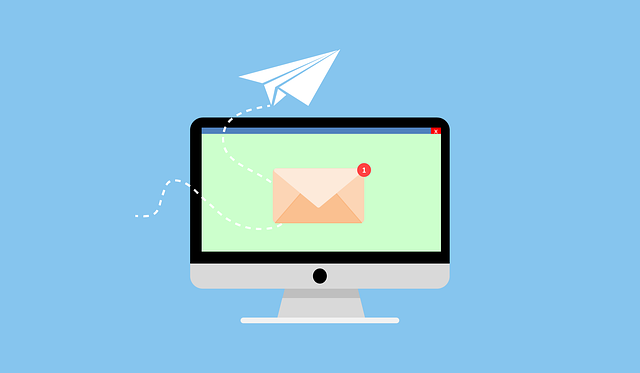
While segmenting your list and keeping it active will help you increase email open rates, there are additional powerful tactics you can employ to achieve significant benefits.
Examine your subject-line copy
When you send an email to your subscribers, it competes with every other message in their inbox. Your emails will be disregarded if the subject lines are uninteresting.
Make your content stand out in readers’ email inboxes by using powerful words and sensory language.
Personalize your email subject line with the name of your subscriber to raise your open rate by as much as 30%.
To prevent your emails from being spammed, test your subject lines with a subject line tester.
Email Marketing’s Pros and Cons
Email marketing is a marketing tool like any other, and has advantages and disadvantages. Here are a few of the more important ones, which we’ll briefly examine:
Pros of Email Marketing
Email marketing has a wide range of advantages. Among the top advantages, these are only a few.
Email Is Based on Permission.
It’s like being given the keys to someone’s home when a customer gives you their email address. The likelihood of engagement and conversion increases when people ask permission before entering rather than just turning up on their own.
Email Gives You Direct Access to Your Audience
Subscribers can be contacted personally and at their convenience. Additionally, since the majority of people check their email several times every day, your message is more likely to be viewed.
Email Offers More Control
In contrast to most other marketing platforms, yours is not yours. All of your labor goes down the drain if the platform disappears. Your reach could be significantly decreased if Google or Facebook make changes to their algorithm.
With email, though, you are the owner of the relationships you make with your readers.
More Personalized Features
Personalized and hyper-targeted campaigns can be made using demographic or psychographic data. As much as 760 percent more money can be generated, according to research on segmented and personalized ads.
Simple to Measure Success
It’s important to measure the progress of marketing campaigns, and automated email marketing makes this process simple.
Scalable
As your audience expands, email marketing campaigns may simply scale without taxing your resources or sacrificing quality.
The Cons of Email Marketing
Email isn’t all sunshine and rainbows. There are a few drawbacks to be mindful of. The good news is that a great strategy can lessen the effects of drawbacks like:
Competition is fierce
It can be difficult to stand out in a crowded inbox. To ensure that your emails are opened, you’ll need to think outside the box.
You Must Have an Email List
In order for you to be successful with email marketing, you must already have an email list. It takes effort and can be difficult to build an email list.
There are many rules and regulations to follow
The use of email for business purposes is regulated by a number of laws. Examples of common laws are CCPA, CAN-SPAM, and GDPR. All of them specify data storage rules and prohibit companies from sending unsolicited emails.
Sadly, even after subscribing, some subscribers may decide to mark your emails as spam. This damages your sender’s reputation
Issues with Delivery and Deliverability
Delivery reliability is not assured. Spam filters are used by several email services (like Gmail and Outlook). You must deal with delivery and deliverability problems if you want to operate efficient email marketing campaigns.
Conclusion
It’s time to improve your strategy if you’ve been ignoring email marketing or operating on autopilot.
For marketers willing to learn how to do it properly, email marketing offers enormous rewards—and it doesn’t have to be difficult.
First, keep in mind that you are a guest in your subscribers’ inboxes. You are only one click away from permanently losing their attention. Deliver value while being courteous and considerate.
You’ll want to keep your word regarding your commitments. Give individuals what they want and send emails frequently to meet their expectations.
There is no secret to increasing email automation. It all depends on what suits your voice and writing style the best.
After mastering the fundamentals, you can advance to email segmentation and analytics. In order to give more helpful emails, start sending individual emails to various groups.
If you find this article helpful, please share it.



